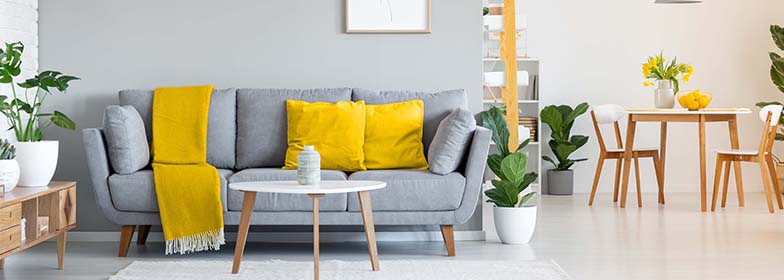
An introduction to home staging
Before you list your home for sale, there’s a step you can take that may help you sell your home quicker and for more money. Learn the advantages of staging your home before you sell, the ins and outs of home staging and who pays for this process.
What’s home staging?
Home staging prepares your home to appeal to a broad range of prospective buyers. Staging your home can include DIY projects like decluttering, rearranging furniture, touching up paint and making minor repairs. Sometimes a seller’s real estate agent may recommend hiring a professional staging company. A professional home stager can bring in new furniture and accessories to redecorate and reorganize your home. Whether you do it yourself or hire someone, the purpose of home staging is to set the scene for buyers to picture themselves living in your home.
5 advantages of home staging
Helping buyers imagine how they would live in your home is just one advantage of home staging. Here are five additional benefits:
- 1. Get your home camera-ready
These days, the majority of homebuyers never tour a home in person before they buy. The rest are likely to look at photographs online first before they come to view your property. So it’s more important than ever to make sure that your home shows well online. Home staging helps create an excellent first impression by ensuring your home looks its best for listing photos.
- 2. Fetch a better price
Survey results by the National Association of REALTORS® Research Group revealed that 52% of sellers’ agents reported that staging increased the dollar value of the home in comparison to similar homes.
- 3. Sell your home faster
According to The Mortgage Reports, home staging can yield another significant return. A home that appears move-in ready through staging can reduce the time your home is on the market. “Homes which are staged before going on the market sell 73% faster, on average, than their non-staged counterparts.”
- 4. Offer what’s in your home
If you’re downsizing, including your furniture in your home’s sale can be a convenient option as well as sweeten the deal. Home staging can help the buyer feel at home not just in your home but also with some of your belongings.
- 5. Receive a tax deduction
You may be allowed to deduct costs associated with selling your home. “This could also include home staging fees,” writes Realtor.com. Consult a tax professional regarding your specific tax implications.
The ins and outs of home staging
If you’re wondering how home staging works, here are a few items to consider about the process of setting up your home to appeal to buyers.
-
Home staging can be done whether your home is vacant or occupied.
-
If you’re still living in your home, small projects like removing personal items, cleaning windows and touching up paint can be done yourself. Your goal is to create a neutral environment, not decorate to your style and taste.
-
Make your home more inviting by sprucing up the exterior. A little curb appeal can go a long way; clean the windows, trim bushes, add color to the front door and put out potted plants.
-
With loaned furniture and accessories, a professional staging company has experience highlighting a home’s best features, minimizing its flaws and giving it an edge over other listings.
Who pays for home staging?
Some real estate agents may offer to stage your home as a complimentary service. Or the fee can be included in the listing package or added to closing costs. HomeAdvisor estimates the national average home staging cost to be under $1,500. To stay within a smaller budget, follow these 10 secrets to staging your home.
The above information is for educational purposes only. Guild Mortgage offers home loan financing only. All information, loan programs and interest rates are subject to change without notice. All loans subject to underwriter approval. Terms and conditions apply. Always consult an accountant or tax advisor for full eligibility requirements on tax deduction.
